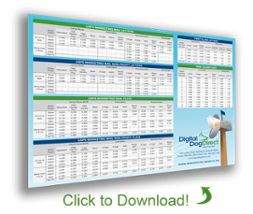Many direct mail marketers wonder, “Am I turning people off by mailing too often?” Given how much people love receiving mail and look forward to checking the mailbox, you would really have to go overboard to turn people off.
More often than not, the question should be, “Am I mailing frequently enough to be remembered and win my audience’s business?”
Obviously, one mailing is never enough to achieve your goals, just like one email, social media post, blog article, or TV ad is not enough, especially if you want to track and test the effectiveness of your marketing. Frequency can be tested just like you would test mail format, offers, headlines, calls-to-action, colors, images, and other components of your direct mail strategy.
Depending on how well-known your brand is, it could take a few mailings for your message to fully register with your audience. Direct mail response rates typically increase after the third unique mailing, and research has shown that customers might need to hear from you 11 times before they buy.
The Direct Marketing Association recommends a direct mail frequency of 21 days. Of course, that doesn’t mean you should set up a campaign to mail every three weeks like clockwork. Timing and recency are just as important as frequency.
For example, if a customer or prospect recently purchased a vehicle or has a child who just reached legal driving age, a mailing for an auto insurance brand can be automatically triggered. Setting up trigger campaigns based on certain life events and activities create frequency while allowing you to reach the right person with the right message during a specific window of opportunity.
Ideally, direct mail doesn’t occur in a vacuum. In other words, direct mail works best as part of an integrated, omni-channel campaign that could include email, social media, and other online and offline platforms. The frequency of your direct mail campaigns could be dictated in part by how many touchpoints you’re creating through other marketing channels.
Using the auto insurance example, direct mail can be used in combination with an email or social media campaign developed to promote special rates for new drivers. If the individual makes a purchase, a “thank you” can be sent via email and social media while a welcome kit can be sent via direct mail. You could then send a coupon for an oil change in three months.
Each of these activities creates touchpoints and increases frequency.
While there is no ideal direct mail frequency, certain factors should be taken into consideration, including the product being sold, the offer, your database, and certain events and milestones that might trigger a mailing.
For most marketers, this means mailing more frequently rather than worrying about whether they’re mailing too frequently.
To discuss your marketing objectives and the right frequency for your direct mail marketing campaign, contact us and unleash the power of Digital Dog Direct.




Comments